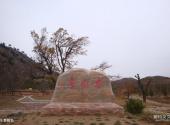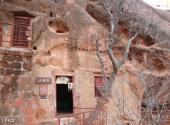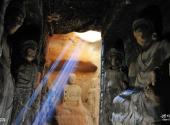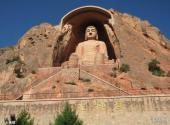
Scenic spot introduction:
The Xumishan Grottoes in Ningxia are one of the ten famous grottoes in China. They were first built in the Northern Wei Dynasty and continued to be constructed and repaired in the Western Wei, Northern Zhou, Sui, Tang, Song, Ming and other dynasties. For a long time, they were the first large-scale grottoes since the Silk Road traveled westward from Chang'an. The largest Buddhist temple ruins, known as "Ningxia Dunhuang".Attractions distribution:
The Xumi Mountain Grottoes are located on the peak of the Sikouzi River, a branch of the Liupan Mountains, 55 kilometers north of Guyuan City, Ningxia. It is one of the famous scenic spots in Ningxia with its numerous peaks, rugged rocks, flowing water in the mountains, and beautiful scenery.The Xumi Mountain Grottoes were founded in the Taihe period of Emperor Xiaowen of the Northern Wei Dynasty (477-499), and flourished in the Northern Zhou and Tang Dynasties. The first capital followed this title. As one of the famous Buddhist grottoes along the ancient Silk Road, the Xumishan Grottoes are comparable to large-scale grottoes such as Datong Yungang and Luoyang Longmen in terms of excavation scale, sculpture style and artistic achievements.
What is very different from most domestic grottoes that are only excavated on a rock cliff is that the Xumishan Grottoes are excavated on 8 rock mountains separated by chasms. Over the years, the grottoes have been eroded by wind and rain, as well as man-made destruction and earthquake disasters. Today, there are more than 20 grottoes with relatively complete statues, mainly distributed in 5 scenic spots including the Grand Buddha Tower, "Children's Palace", Yuanguang Temple, Xiangguo Temple and Taohua Cave. There are ladder bridges connecting them, making it very convenient for sightseeing.
The various grottoes excavated in Mount Xumi from the Northern Wei Dynasty to the Sui and Tang dynasties reflect the styles of different eras: the Buddha statues in the Northern Dynasties grottoes have high nose bridges and retain the style of Indian Buddhism. Some statues have thin faces, slim shoulders, wide robes and large sleeves. It is very similar to the artistic image in the scroll of "Luo Shen Fu" by the Eastern Jin Dynasty painter Gu Kaizhi; the Sui Dynasty Buddha statues have long upper bodies, short lower limbs, short necks, and simple and heavy images; the Tang Dynasty Buddha statues tend to be perfect in shape, with plump bodies and luxurious and gorgeous clothing. , showing the extraordinary temperament of Tang Dynasty art.
Scenic spot qualifications:
National 4A-level scenic spotScenic spot features:
Archeology, Buddhist culture, grottoes, Buddha statuesScenic spot map:
Scenic spot map
Attraction Address
Travel Guide
Tour route:
Route 1: Entrance → Big Buddha Building → Zisun Palace → Yuanguang Temple → Peach Blossom Cave → Xiangguo Temple → Mount Xumi Museum
Route 2: Entrance → Mount Xumi Museum → Big Buddha Building → Zisun Palace → Yuanguang Temple → Peach Blossom Cave → Xiangguo Temple
Best time to visit:
summer
Scenic spot map:
Scenic spot map
Tourist Transportation
Scenic spot location:
China>Ningxia Hui Autonomous Region>Guyuan City
How to get there:
Take the shuttle bus from Guyuan to Sanying Town (6 yuan). There is a bus to Mount Xumi at the intersection in the north of the town.
Scenic area map:
Click to expand the scenic area map
Attraction Tickets
Xumishan Grottoes ticket price:
60 yuan/person
Scenic area opening hours:
7:00-19:00






